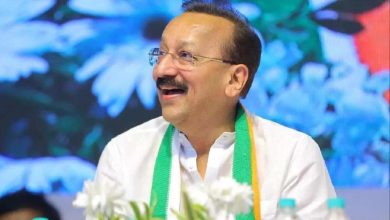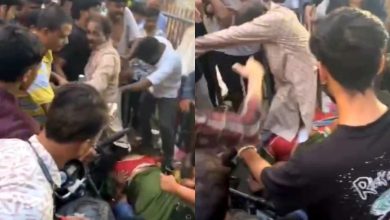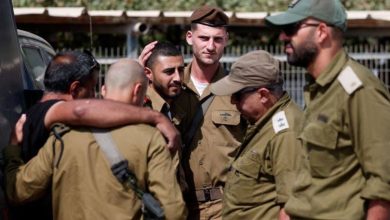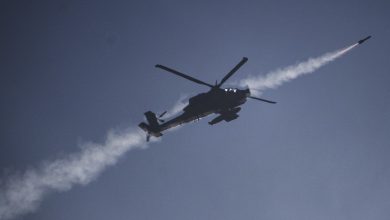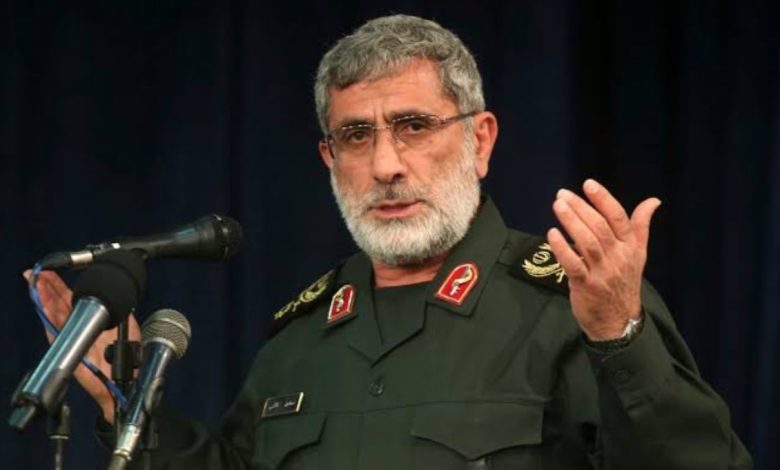
Recent revelations regarding Iranian commander Ismail Qaani have sent shockwaves through the region. He is accused of orchestrating the killings of Qasem Soleimani and Hassan Nasrallah, while Israeli networks within Hezbollah and Iran have reportedly been dismantled.
Despite Israel’s efforts, it has been unable to erase the evidence of its involvement. Iranian agencies have also seized millions of dollars in assets during these operations.
The Islamic Revolutionary Guard Corps (IRGC), Quds Force, and Lebanon’s Hezbollah are reportedly facing the worst crisis in their history. Despite Israel’s technological superiority and American support, it has failed to cripple Iran and Hezbollah, even after spending billions in an attempt to do so.
However, the influx of dollars has not diminished in any society, and Israel and the US have not given up. Eventually, they managed to infiltrate the IRGC.
A significant turning point occurred on January 3, 2020, when a US drone strike in Baghdad killed the influential Iranian general Qasem Soleimani, along with seven other leaders. Following Soleimani’s assassination, Qaani was appointed as the head of the IRGC. This incident also involved a key commander of the IRGC and an Iraqi citizen, marking the start of intensified hostilities between Israel, the US, and their perceived enemies.
Speculation about Ismail Qaani and betrayal
Today, discussions around Qaani’s loyalty and potential betrayal are widespread. Questions about his allegiance have intensified, with Israel claiming he has died, only for reports to later indicate that he is alive but in custody.
Speculation has been fueled by claims that Qaani was killed in an Israeli attack in Syria, which was later amended to suggest he might have been injured. There have also been reports that he was killed alongside a prominent Hezbollah leader in Beirut due to Israeli bombings.
Simultaneously, inquiries regarding his alleged collaboration with Israel are ongoing. It appears that Iranian officials are issuing conflicting reports, possibly as part of a strategic deception, since Hezbollah and the IRGC’s survival hinges on Qaani’s status. Israel is keen to neutralize Qaani to save its remaining network.
The last confirmed sighting of Qaani was on September 29 in Tehran, where he attended a condolence gathering for the martyrdom of Hassan Nasrallah. After Iran’s attack on Israel on October 1, Supreme Leader Ayatollah Ali Khamenei addressed a major Friday prayer gathering in Tehran, and notably, Qaani was absent from this event despite heightened tensions.
It is essential to note that Israel had threatened to target Ayatollah Khamenei. On October 6, the Supreme Leader awarded a brigadier for targeting Israeli airbases, and again, Qaani was not present.
Deteriorating dynamics
On October 9, Iranian media reported that Ayatollah Khamenei would soon honor Qaani with a prestigious award. By October 10, multiple reports indicated that Qaani might be under investigation, further complicating the situation.
Three major theories emerged by October 10. The first theory suggested that immediately after Nasrallah’s alleged martyrdom, claims arose that Qaani had either been killed or injured in an Israeli attack.
The IRGC promptly denied these claims. On October 5, Israel attacked a building in the suburbs of Beirut, targeting Hashem Safi al-Din, the head of Hezbollah’s executive council and a potential successor to Nasrallah.
During this time, speculation about Qaani’s presence emerged, with suggestions that he might have been injured or killed. However, Deputy Commander Iraj confirmed that Qaani had not been harmed.
On October 10, military expert Babak posted on X (formerly Twitter) suggesting that Qaani was under investigation and had suffered a heart attack due to stress. The IRGC denied this as well.
The volume of contradictory information surrounding Qaani makes it challenging to ascertain the facts. The situation becomes even more perplexing when looking at Tehran’s reactions to the losses of top leaders, including those from Hezbollah, suggesting significant intelligence breaches have occurred.
This could explain why Qaani appears to have gone underground. Furthermore, increasing attacks on Iranian scientists, Hezbollah, Hamas, and Syria following General Qasem Soleimani’s assassination have severely damaged the IRGC’s credibility. Qaani seems to have failed to maintain leadership within the IRGC, struggling to fill Soleimani’s considerable shoes.
Internal Investigations and Suspicions
There are suspicions that Qaani may be involved in Israeli intelligence infiltrations and has played a role in the assassination of Hassan Nasrallah. Sources close to Hezbollah also claim that intelligence leaks about Nasrallah and other leaders originated from within the IRGC. It is believed that Qaani is under house arrest, with ongoing interrogations being conducted under the supervision of Ayatollah Khamenei.
Some reports suggest that Ismail Qaani was supposed to attend a meeting with Hashem Safi al-Din in Beirut, where the recent attack occurred, but he did not show up. This absence fueled the first rumors of his death. The advisor to IRGC Commander-in-Chief Hossein Salami dismissed these speculations, asserting that Qaani is “healthy” and will be awarded a top military honor by the Supreme Leader in the coming days.
Based on information from reliable sources, it appears that Ismail Qaani is currently under custody in Iran, along with over 50 other commanders. The IRGC and Hezbollah are gathering information regarding Qaani and his network.
It’s worth noting that former President Ebrahim Raisi had dismissed 2,000 personnel from the IRGC following General Soleimani’s assassination. Iranian intelligence has also seized millions of dollars in assets.
Credible sources indicate that Iran has significantly dismantled the Israeli network within its agencies and institutions. This could explain the reduced effectiveness of Hezbollah’s leadership and fewer impactful attacks on Iranian installations in Syria. The Israeli military is reportedly suffering heavy casualties in ground battles.
In light of these developments, Iranian Speaker Mohammad Baqir Qalibaf personally flew to Beirut to assess the damage from Israeli airstrikes, yet Israel did not target the Iranian Speaker during this visit. Similar actions have been taken by Iran’s President and Foreign Minister, who are engaging in diplomatic efforts across the region.
Ayatollah Ali Khamenei is also in the public eye. It appears that Iran has taken significant steps to regroup and purge its ranks of adversaries before incurring further substantial losses. Consequently, Israel has been unable to escalate its threats.
Author: Nadeem Raza
